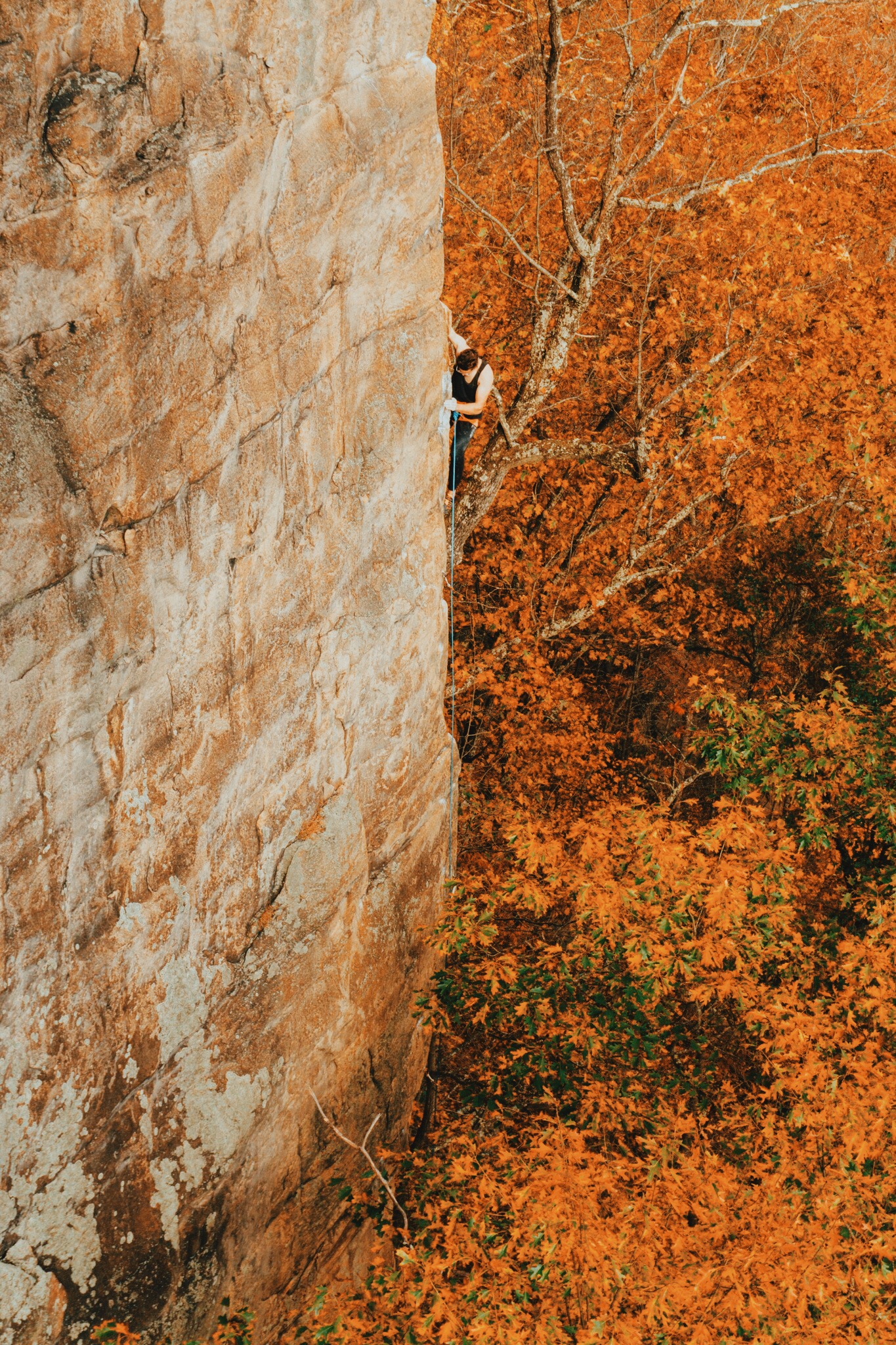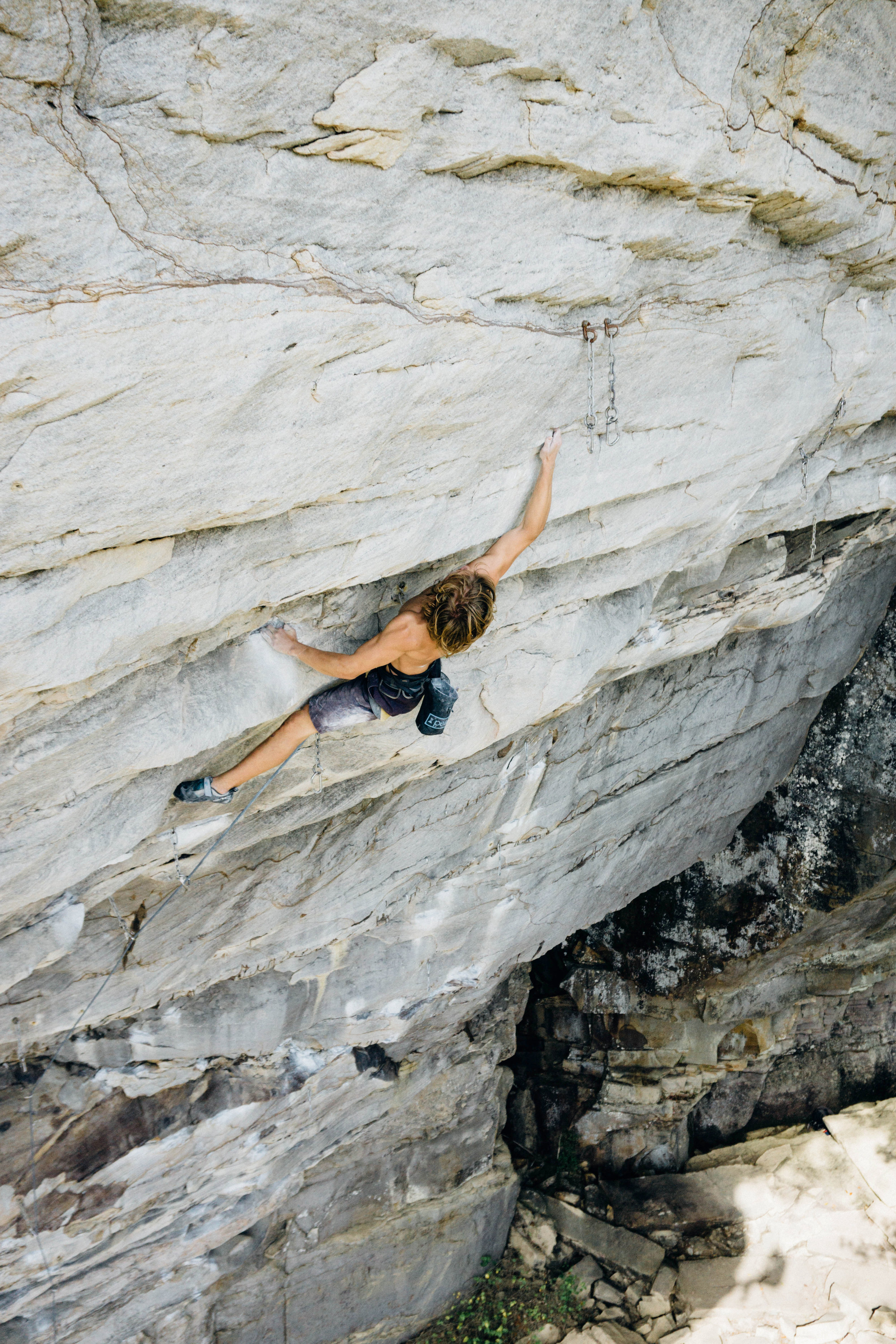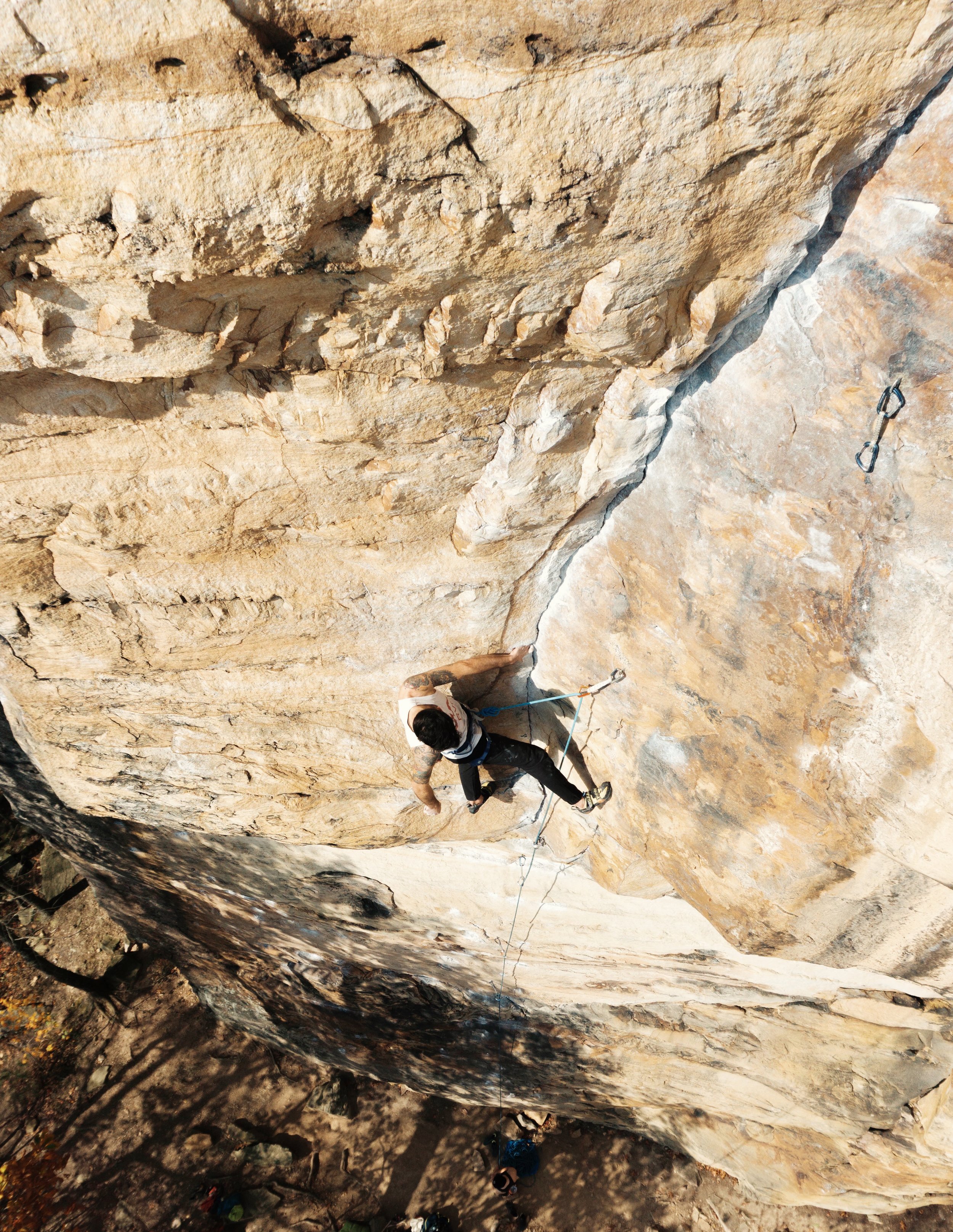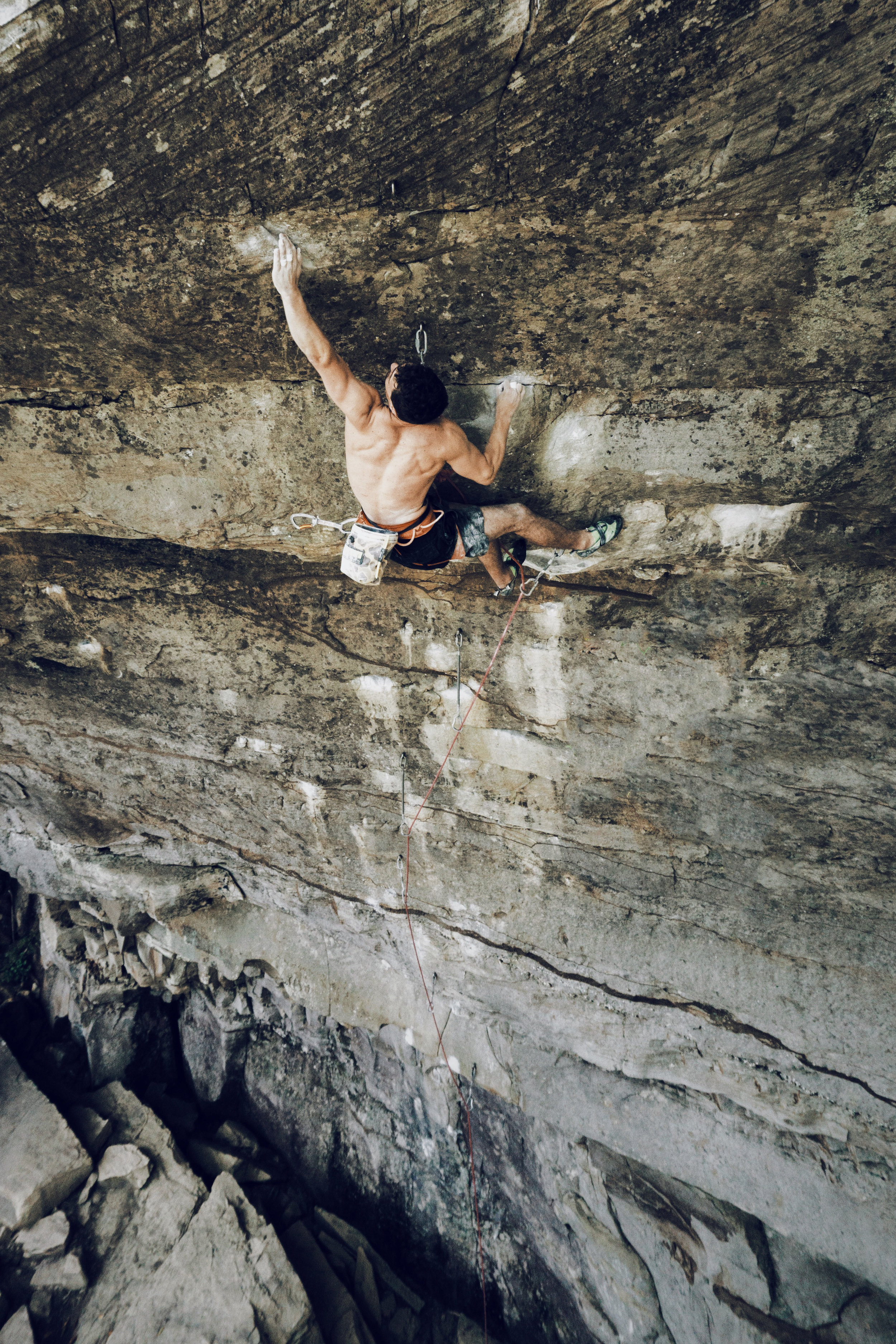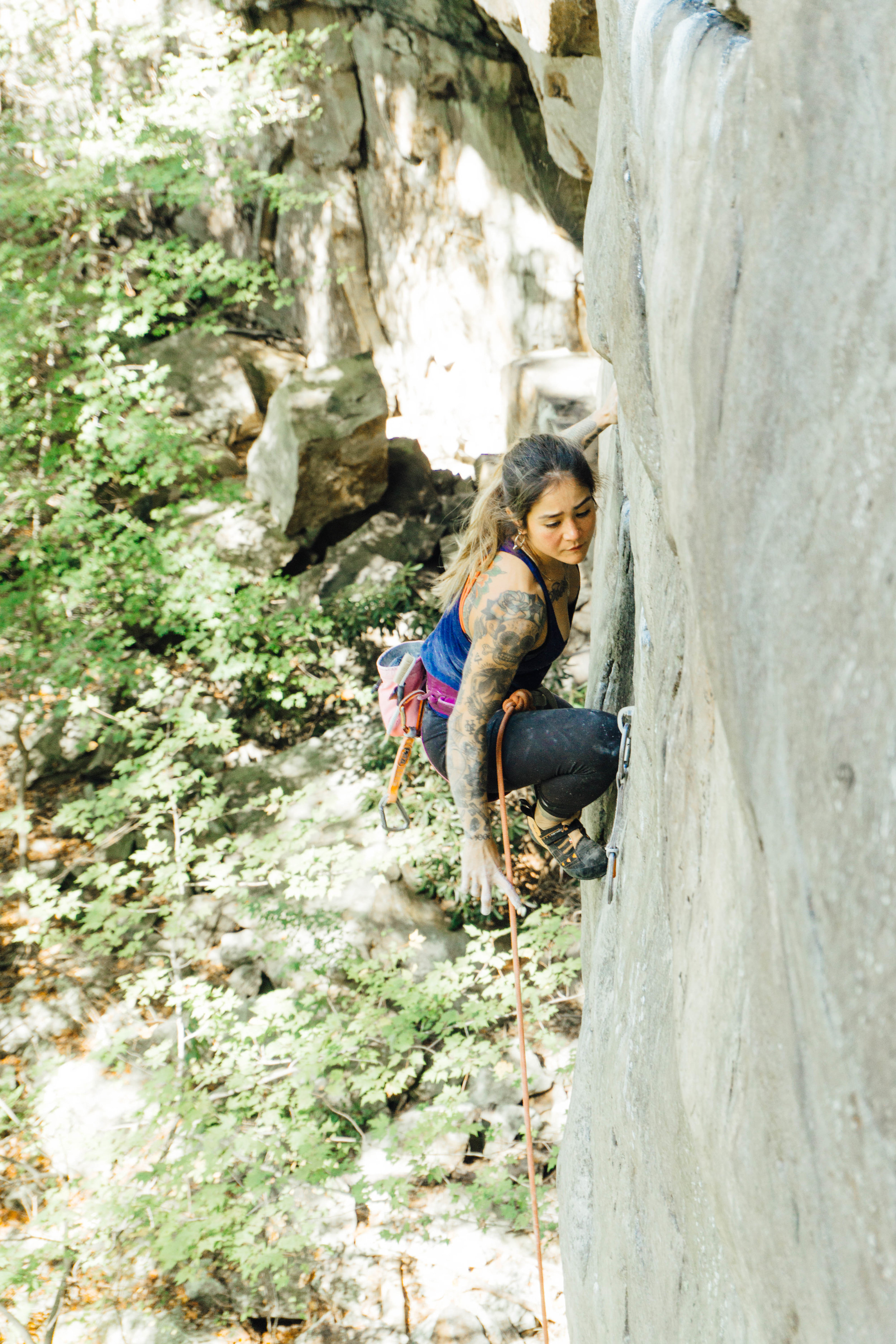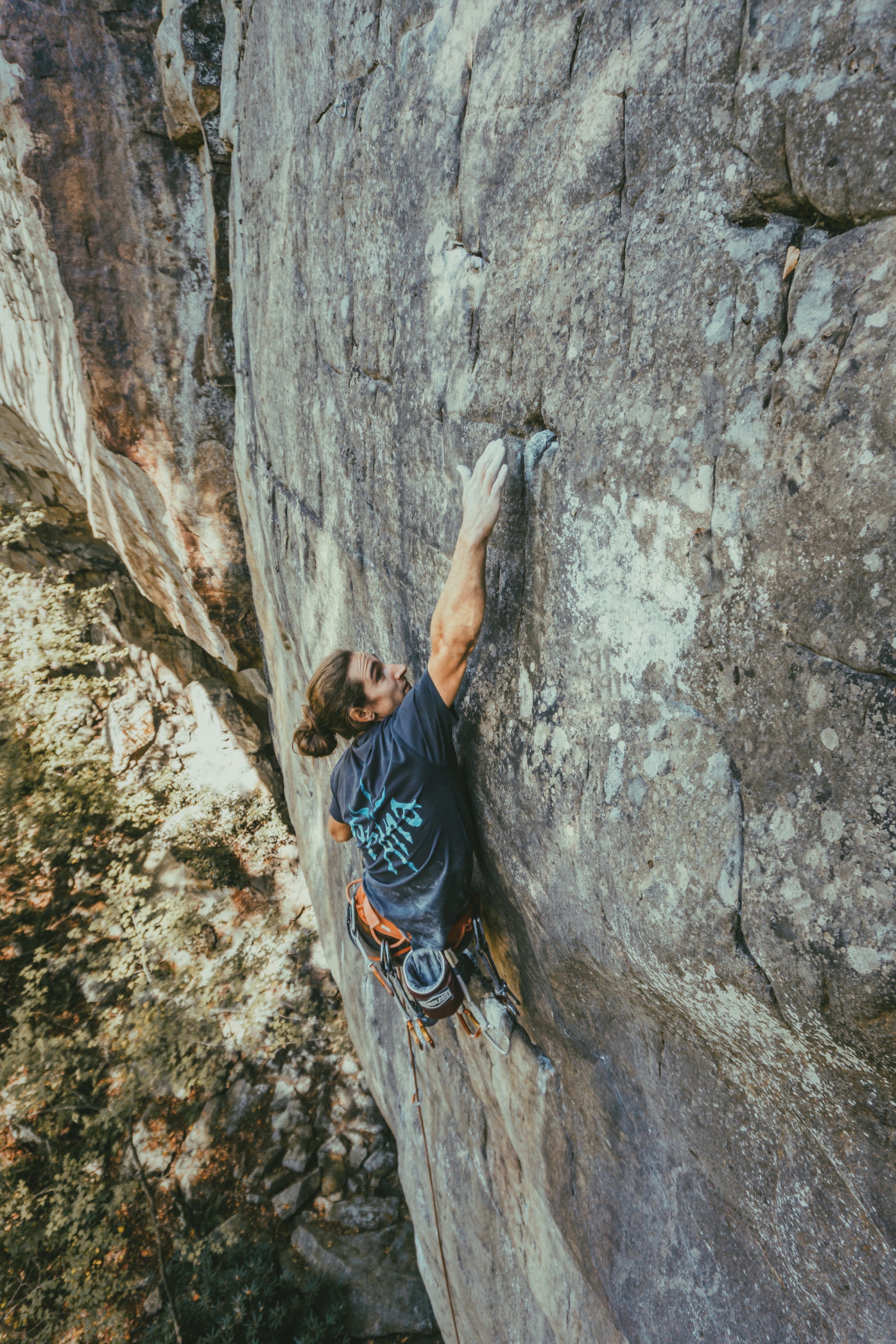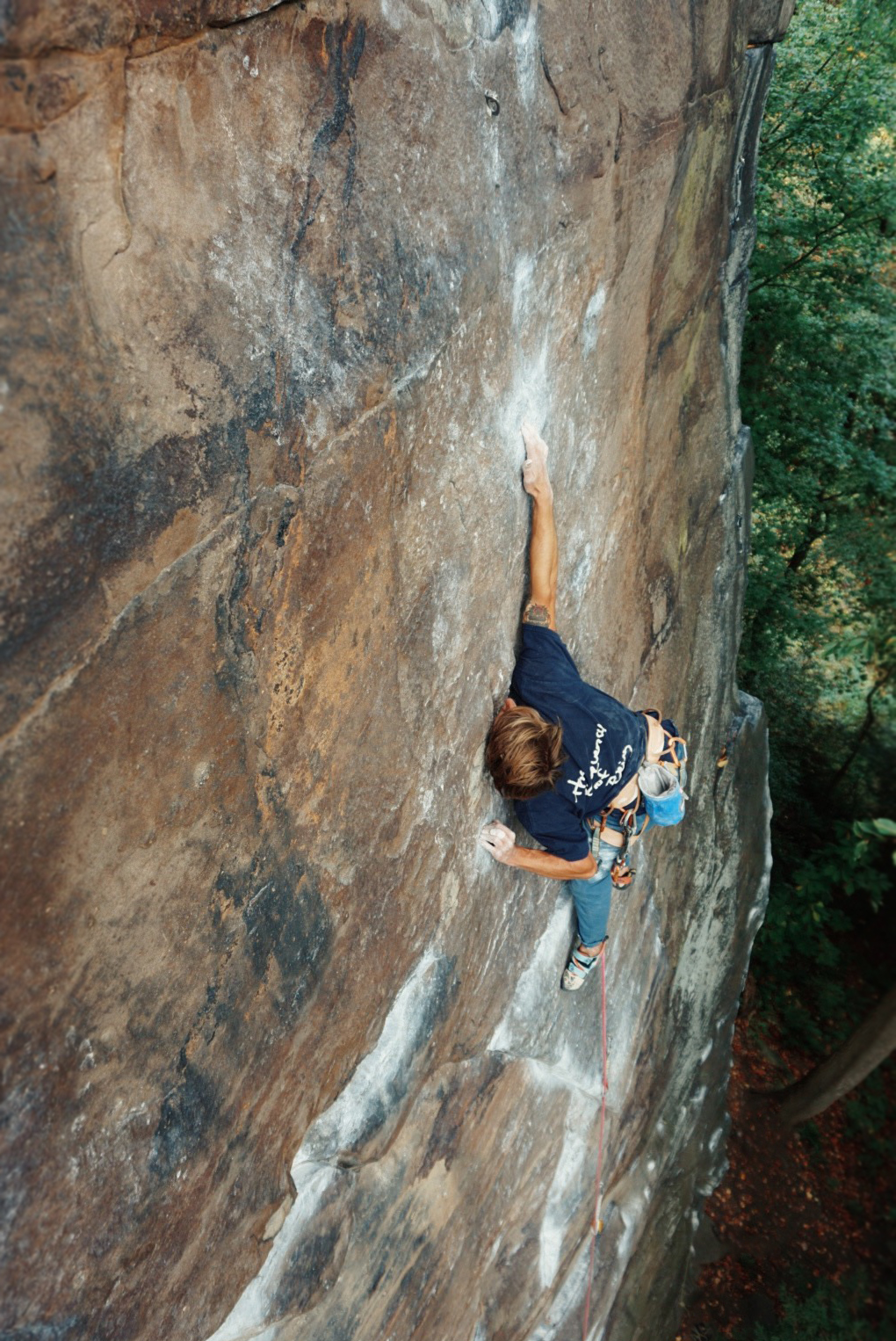On The Shoulders of Giants: New River Gorge

In the winter of 2009, the first edition of Mike Williams’ much-anticipated guidebook for the New was published. Seemingly every climbing gym and outdoor gear shop in the Southeast had been taking pre-orders, and for months after the release, it was impossible to find a copy. Coincidentally, that same season, as a sophomore in high school, I had just discovered climbing for myself.
I’d regularly wander into the gear shop at my hometown climbing gym and sit down with an elusive shop copy of New River Gorge Rock Climbs. Section by section, cliff by cliff, and route by route, I’d read about this Eden-like destination nestled in the Appalachian hillsides straddling the New River with thousands of established routes on bullet-hard Nutall Sandstone, just five hours from where I grew up. I studied that copy inside and out like a lost soul finally discovering a sacred text. I remember daydreaming over the photos of impeccable rock featuring locals and legends alike.
Mike’s writing, his humor and attention to detail, made for a catalog that was equal parts entertaining and informative, while remaining whole-heartedly captivating. I couldn’t help but read every description of every route over and over again. As noteworthy as the words were, nothing jumped off the page quite like the 35mm film photos of the area’s legendary first ascensionists. Scattered throughout the guidebook are nostalgic images of divinely rugged, lycra-clad gentlemen caught in the act of the New’s quintessential high-step lock-offs, arms outstretched in heroic postures, embracing sheer features of earth that could fill Atlas with envy.
Starting in the late eighties and well into the early nineties, the likes of Doug Reed, Porter Jerrard, Eric Hörst, Rick Thompson, Brian McCray, Kenny Parker and others could be found frequently discovering, bolting, and establishing the best routes in the region. These classic images found in the guidebook flawlessly capture their interaction with the pristine stone surrounding them, but more importantly, hint at the tangible sense of their divine inspiration.
Sport routes at the New climb unlike routes anywhere else for a number of reasons. Foremost, the nature of the rock lends itself to sequential bouldery crux sections, punctuated by reasonable rests, often resulting in routes with a ‘stop-and-go’ rhythm just as unique as the holds they’re made of. Depending where you find yourself in the gorge, you may encounter sandstone in varying shades of porcelain white, charcoal black, tan and fluorescent orange, often times intermingling in beautiful swatches as if on an artist's palette. However, the most notable differentiator could very well be the bolts on the routes on themselves. Many routes at the New were developed during the advent of the bolting and therefore often bare only minimal amounts of hardware. Rather than questioning the equipper’s will and intent, visiting climbers are encouraged to expand their comfort zone, and with it, their minds before casting judgement.
Over the years, the climbing scene at the New River Gorge has changed noticeably. Routes that used to be listed as projects in Williams’ ‘09 guidebook have now seen multiple ascents. Popular establishments in Fayetteville have come and gone. Crags that once saw little traffic have now become destinations for city-dwelling weekend warriors. Thirty years after the first bolts were drilled, many of the main players that were so instrumental in the New’s development have moved on. But what remains in their stead is the empirical evidence of their efforts. The world-class routes they left behind adorn the striking walls of the gorge. Countless classics stand the test of time and continue to inspire generations of climbers—anyone looking to challenge themselves on some of the best stone in the States.
Graphic Designer, Photographer, Climber from Richmond, Virginia



